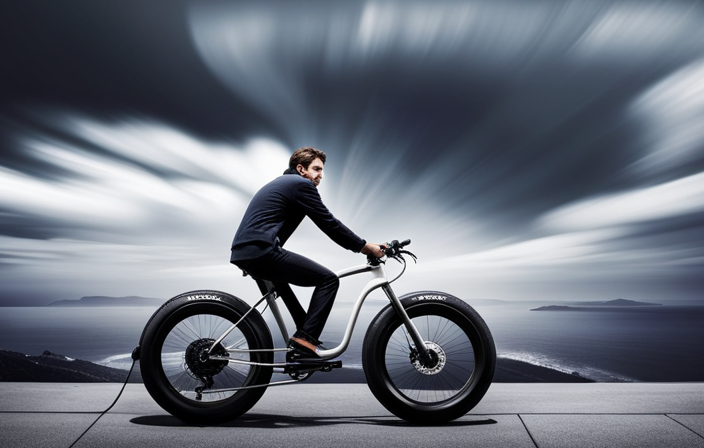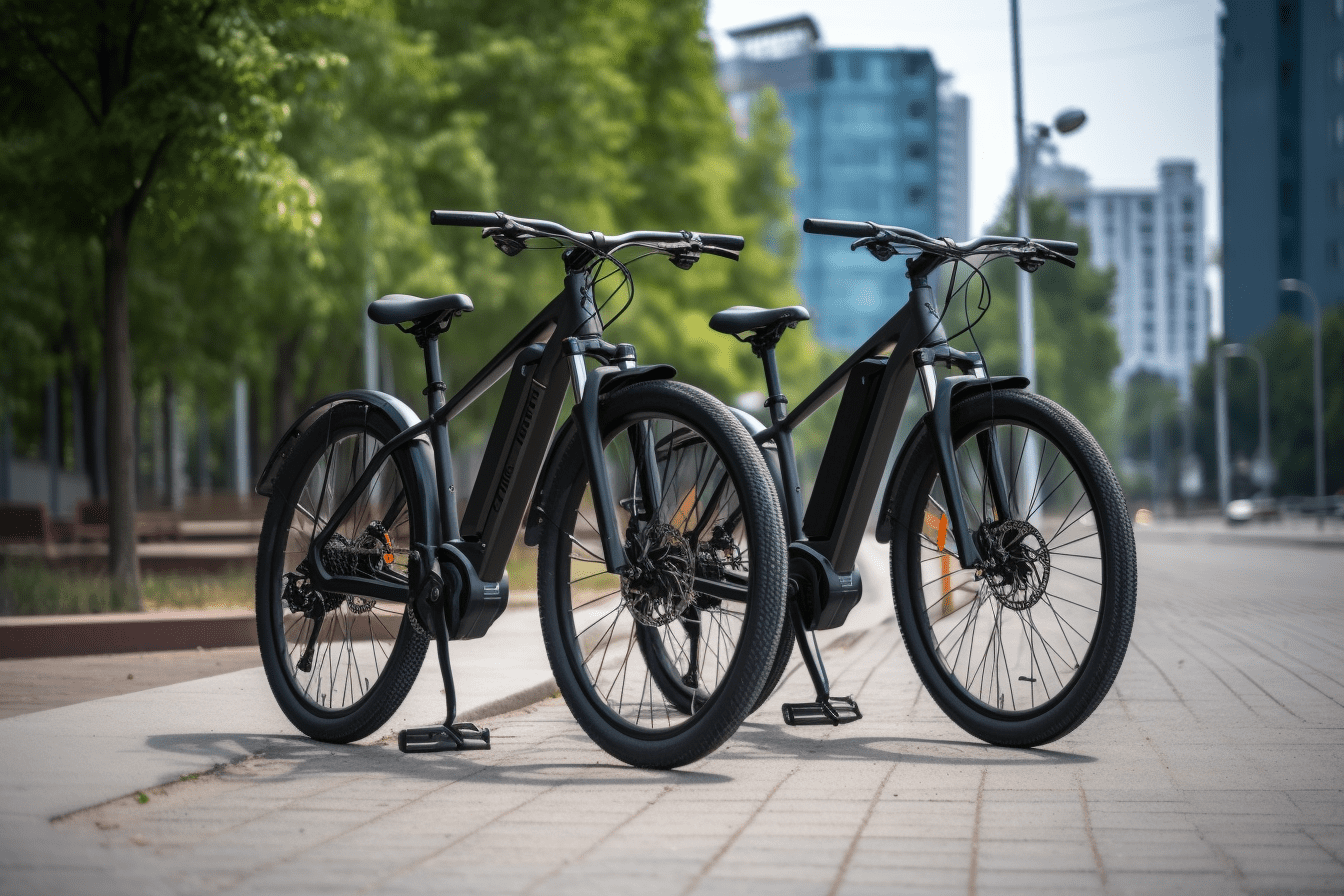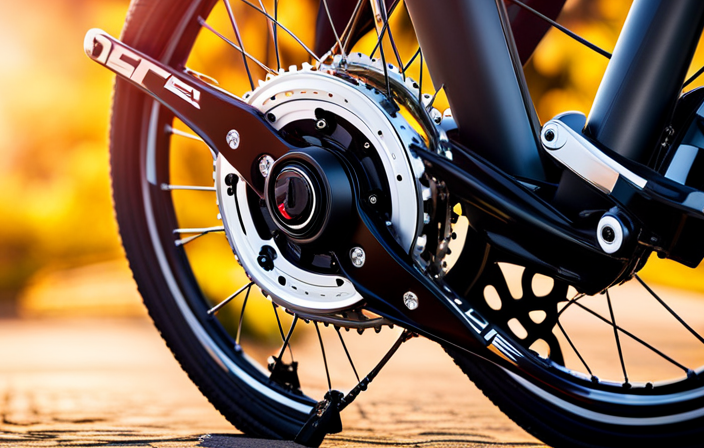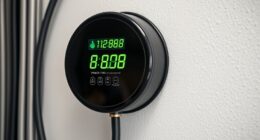As an avid dirt bike enthusiast, I’ve often wondered how difficult it would be to add an electric start system to my trusty machine. The idea of effortlessly firing up my bike with a simple push of a button is undeniably appealing.
In this article, we will delve into the intricacies of installing an electric start system on a dirt bike. From understanding the components to troubleshooting any issues that may arise, we will explore the technical process in detail.
So, let’s dive in and uncover just how hard it really is to bring the convenience of electric start to our beloved off-road companions.
Key Takeaways
- Proper installation and insulation of the electric start system is crucial.
- Regular maintenance and troubleshooting are necessary to ensure optimal performance.
- Electric start offers effortless ignition and reduces physical strain.
- However, it may add weight to the bike and require regular maintenance and charging.
Understanding the Components of an Electric Start System
Understanding the components of an electric start system can be a bit challenging, but once you grasp the basics, it becomes much easier to put electric start on your dirt bike.
The working mechanism of an electric start system involves several key components. Firstly, there is the starter motor, which is responsible for turning the engine over. It is connected to the battery, which supplies the necessary power.
The starter switch, usually located on the handlebars, activates the starter motor when pressed. Additionally, there is the solenoid, which acts as a relay between the starter motor and the battery.
Troubleshooting common issues with electric start systems may involve checking the battery’s charge, ensuring the connections are secure, and testing the functionality of the starter motor and solenoid.
With a good understanding of these components and how they work together, installing an electric start system on your dirt bike becomes a manageable task.
Evaluating the Compatibility of Your Dirt Bike
Assessing the compatibility of your off-road motorcycle can be a straightforward process. To evaluate the compatibility of your dirt bike with an electric start system, consider the following factors:
-
Electrical System: Check if your bike has a robust electrical system that can handle the additional load of an electric start. Ensure that the battery, wiring, and charging system are in good condition.
-
Engine Design: Evaluate if your bike’s engine design allows for the installation of an electric start system. Some engines may require modifications or additional components to accommodate the electric start.
The benefits of adding an electric start to your dirt bike are significant. It provides convenience, especially in challenging terrains or when restarting the engine after a stall. Electric start systems also eliminate the need for kick-starting, reducing fatigue and the risk of injury. Additionally, they make the bike more accessible to riders of all skill levels, including beginners or those with physical limitations.
Researching and Selecting the Right Electric Start Kit
When researching and selecting the appropriate kit, it’s important to consider the compatibility of your off-road motorcycle with an electric start system. Not every dirt bike is designed to accommodate an electric start, so it’s crucial to ensure that your bike can handle the additional weight and modifications required. To select the right electric start kit, you need to understand the installation process and the components involved. Here is a table that outlines the key components of an electric start kit:
| Component | Description |
|---|---|
| Starter Motor | Electric motor that turns the engine’s crankshaft to start the bike |
| Battery | Provides the necessary power to the starter motor |
| Wiring Harness | Connects the battery, starter motor, and ignition switch |
| Ignition Switch | Activates the electric start system and controls the power flow |
By researching and understanding these components, you can make an informed decision when selecting the right electric start kit for your dirt bike.
Gathering the Necessary Tools and Materials
To gather all the tools and materials you’ll need, make sure you have a comprehensive list of everything required for the installation process.
When gathering tools, ensure you have a socket set with various sizes, a wrench set, pliers, wire strippers, and a multimeter for testing electrical connections. It’s also essential to have a torque wrench to tighten bolts to the manufacturer’s specifications.
When choosing materials, select an electric start kit specifically designed for your dirt bike model. Check that the kit includes a starter motor, starter solenoid, battery, wiring harness, and any necessary brackets or mounting hardware. Additionally, consider purchasing dielectric grease to protect electrical connections from moisture and corrosion.
Remember to consult the manufacturer’s instructions and any online resources specific to your dirt bike model for guidance on gathering the correct tools and materials.
Preparing Your Dirt Bike for the Conversion Process
Before you begin the conversion process, make sure your dirt bike is properly prepared.
The first step in determining the feasibility of adding an electric start to your dirt bike is to assess the cost. Consider the price of the electric start kit, as well as any additional tools or materials you may need. Research different kits and compare prices to find the best option for your budget.
Once you have determined the cost, you can move on to assessing the feasibility of the conversion. Take into account the make and model of your dirt bike, as well as any modifications or customizations you have already made. Some dirt bikes may be more compatible with electric start conversions than others.
It is essential to thoroughly research and understand the process before proceeding.
Installing the Electric Start Kit Step by Step
To install the electric start kit step by step, you’ll need to carefully follow the instructions provided and gather all the necessary tools and materials. The electric start kit is a great addition to your dirt bike, providing convenience and ease of use.
Here’s a breakdown of the installation process:
-
Begin by disconnecting the battery and removing the seat to access the wiring.
-
Locate the starter motor and mounting bracket, and remove any necessary components to make room for the electric start kit.
-
Install the new starter motor and bracket, ensuring a secure fit.
-
Connect the wiring according to the provided instructions, making sure all connections are tight and secure.
Once the installation is complete, you’ll experience the benefits of electric start, such as effortless starting with the push of a button. This upgrade eliminates the need for kickstarting, making it easier and more convenient to get your dirt bike up and running.
Wiring and Electrical Considerations
Now that we have covered the step-by-step installation process of the electric start kit, let’s delve into the wiring and electrical considerations. This is a crucial aspect as it ensures the smooth functioning of the electric start system on your dirt bike.
To make the necessary wiring modifications, you will need to refer to the wiring diagram provided with the electric start kit. This diagram will guide you through the process of connecting the various wires and components. Pay close attention to the color-coding and ensure proper insulation to avoid any electrical mishaps.
Additionally, you will need to install a battery to power the electric start system. This involves finding a suitable location on your dirt bike to mount the battery securely. Make sure to follow the manufacturer’s instructions for battery installation and connect it to the wiring system as specified in the wiring diagram.
By carefully following these steps and considering the wiring and electrical aspects, you will be one step closer to enjoying the convenience of an electric start on your dirt bike.
Now, let’s explore the specific wiring modifications and battery installation in more detail through the following table:
| Wiring Modifications | Battery Installation |
|---|---|
| Connect wires according to the wiring diagram | Find a secure location for battery mounting |
| Insulate all connections properly | Follow manufacturer’s instructions for installation |
| Pay attention to color-coding | Connect battery to wiring system as specified |
| Double-check all connections for accuracy | Ensure proper electrical grounding |
Testing and Troubleshooting the Electric Start System
Testing and troubleshooting the electric start system is essential to ensure its proper functioning. When it comes to testing techniques, there are a few key steps to follow.
First, check the battery voltage using a multimeter to ensure it is within the acceptable range.
Next, inspect the wiring connections for any loose or damaged wires that may be causing issues.
Additionally, testing the starter motor by connecting it directly to a power source can help determine if it is working properly.
Common troubleshooting issues with the electric start system include a weak or dead battery, faulty wiring connections, or a malfunctioning starter motor.
By thoroughly testing and troubleshooting these components, you can identify and resolve any problems that may arise.
It is important to approach the testing process with precision and attention to detail to accurately diagnose and fix any issues with the electric start system.
Maintaining and Caring for Your Electric Start System
Make sure you properly maintain and care for your electric start system to ensure its longevity and reliability.
One crucial aspect of maintenance is maintaining battery life. To do this, regularly check the battery’s charge and make sure it is always at an optimal level. If the battery is not holding a charge, it may need to be replaced. Additionally, ensure that the battery terminals are clean and free from corrosion.
Another important aspect of maintenance is troubleshooting common issues. If the electric start system is not working, check the connections and wiring for any loose or damaged parts. Additionally, make sure the ignition switch is in the proper position and that the kill switch is not engaged.
By regularly maintaining your electric start system and troubleshooting common issues, you can ensure that it operates smoothly and reliably.
Enjoying the Benefits of an Electric Start on Your Dirt Bike
To fully appreciate the advantages, you’ll love how effortless it is to ignite your dirt bike with just a simple push of a button. Evaluating the cost effectiveness of adding electric start to your dirt bike is crucial. While the initial investment may seem high, the convenience and time saved on kick-starting can make it worthwhile.
The advantages of using electric start on a dirt bike are plentiful. Firstly, it eliminates the need for a kick-starter, reducing the physical strain on your leg. Secondly, it ensures a quick and reliable start, even in cold weather or at high altitudes.
However, there are a few disadvantages to consider. Electric start systems add weight to the bike, which can affect maneuverability. Additionally, they require a battery, which needs regular maintenance and charging.
Overall, the benefits of electric start outweigh the drawbacks, making it a valuable addition to any dirt bike.
Frequently Asked Questions
How much does it cost to install an electric start system on a dirt bike?
Installing an electric start system on a dirt bike can cost between $200-$500, depending on the make and model. The benefits include convenience and ease of starting, while drawbacks include increased weight and potential for battery drainage.
Can I still kick start my dirt bike after installing an electric start system?
Yes, you can still kick start your dirt bike even after installing an electric start system. The traditional kick start mechanism is not affected by the installation of the electric start system.
Will installing an electric start system affect the performance of my dirt bike?
Installing an electric start system on a dirt bike does not significantly affect engine performance. The benefits of electric start include convenience, reliability, and ease of use. It allows for quick and effortless starting, especially in challenging terrain or during long rides.
Is it possible to install an electric start system on any type of dirt bike?
Installing an electric start system on any type of dirt bike is possible, but it may require modifications to the bike’s electrical system and engine. Electric start benefits include convenience and ease of use, while disadvantages include added weight and potential impact on performance.
How long does it typically take to install an electric start system on a dirt bike?
Installing an electric start system on a dirt bike typically takes around 4-6 hours. Factors to consider before deciding are the added weight, cost, and potential maintenance. Pros include convenience and ease of use, while cons include decreased performance and increased complexity.
Conclusion
As I sit here, gazing at my dirt bike, I can’t help but marvel at the transformation it has undergone. The addition of an electric start system has given it new life, symbolizing the ease and convenience that awaits me on every ride.
The process may have been technical and detailed, but the reward is worth it. No more strenuous kicks, no more frustration. Just a simple push of a button, and I’m ready to conquer any terrain.
So, fellow riders, don’t hesitate to embrace this upgrade. Unleash the power of symbolism and experience the thrill of an electric start on your dirt bike.
















